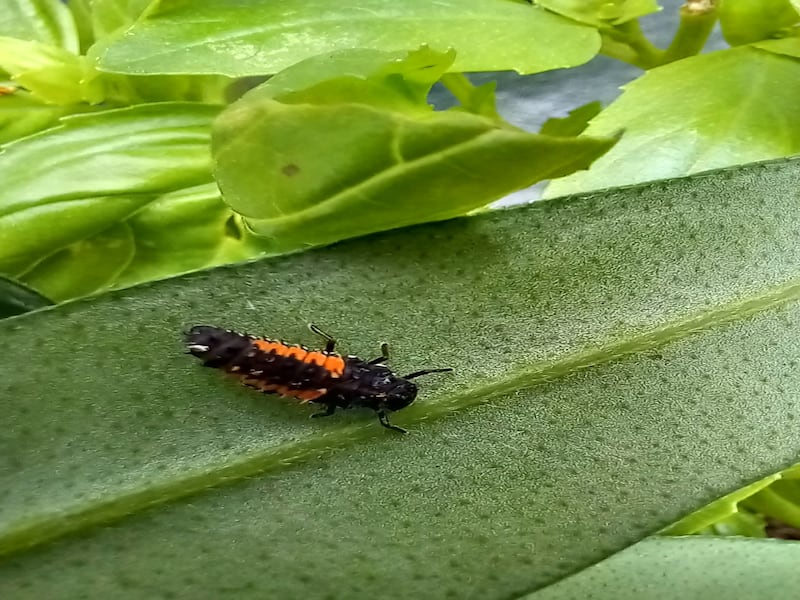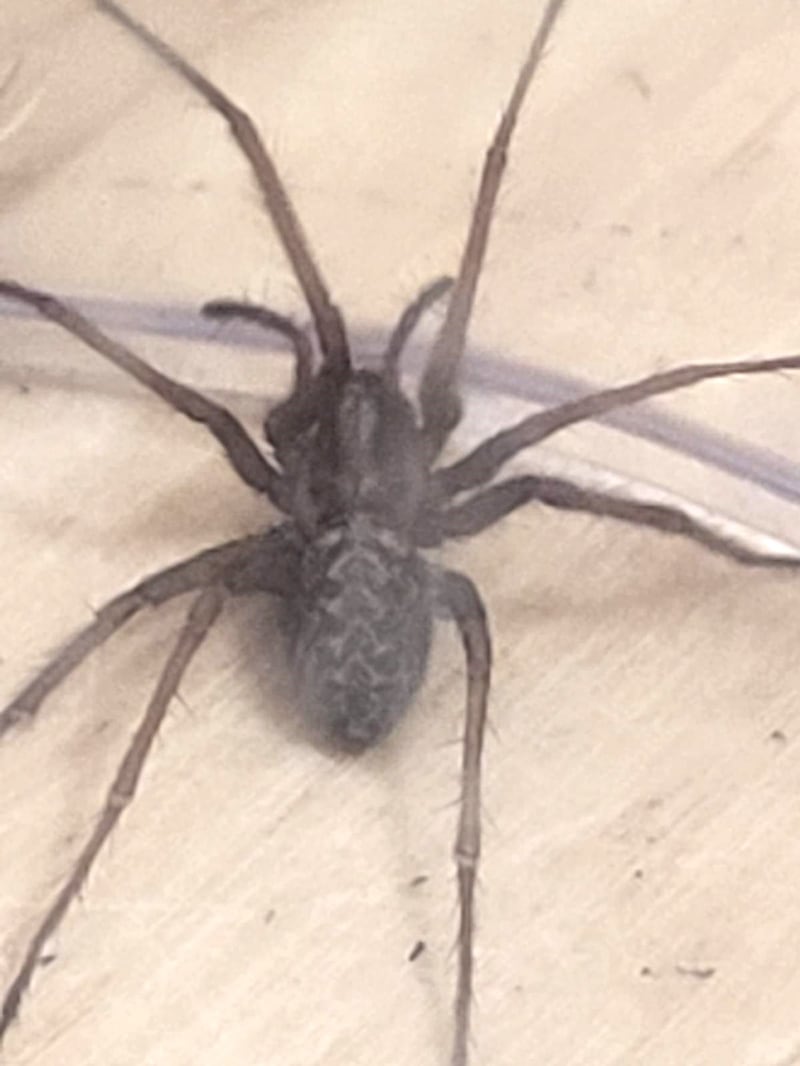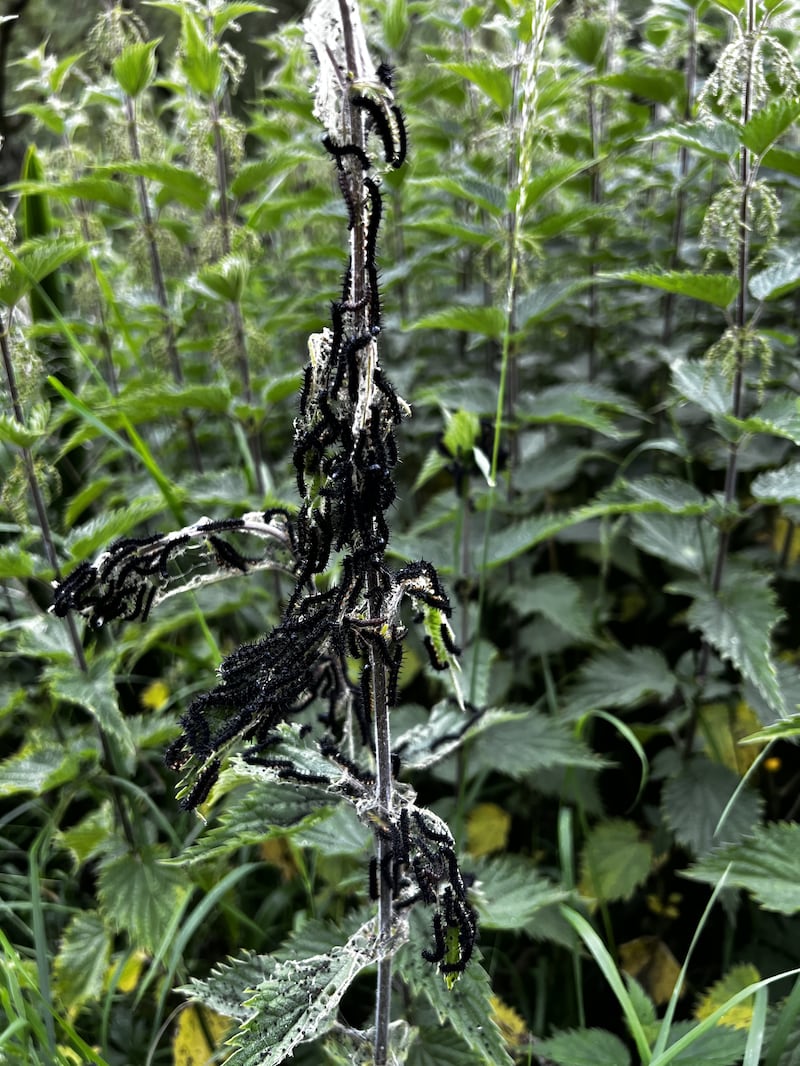We live in Rosmuc, Connemara, where we are mostly surrounded by bogland. This year, we have noticed a huge increase in the number of cuckoos, often flying low through our garden and stopping to rest on our pine trees. Noreen Ryan, Co Galway
Welcome news. During May, the National Parks and Wildlife Service linked up with the BTO Cuckoo team in Britain to satellite track four Irish cuckoos – three from Killarney National Park and one from Burren National Park. The first one from Killarney began the migration south on June 13th and flew down through France into northern Italy. The second, also from Killarney, was in Ravenna, Italy, by June 20th. Both stayed in Italy for at least a week and are now on route to Africa. The Clare bird was still around at the end of June. Track them here.

I found this ladybird larva on my lupins. I remembered you said it was a harlequin ladybird – an invasive species – so I squished it. P McLeer, Drogheda
You did your business right. This is indeed the larva of the harlequin ladybird, identifiable by the two inverted L-shaped rows of orange tubercles along each side of the body and its overall very spiky appearance. This invasive species was first recorded here in Cork in 2009 and has now spread to Limerick and Kerry as well as along the south and east of Ireland. Both the larvae and the adults eat our native ladybirds.
READ MORE

What was this caterpillar that was munching on a recently planted oak tree? O Farrell, Greenore
It is the larva of the Hebrew character moth, so-called because of the conspicuous black mark in the centre of each forewing of the adult, which was considered to be a good representation of a letter in the Hebrew alphabet. The caterpillar feeds on birch and aspen as well as oak.

This huge spider emerged from my shopping when I was unpacking. Is it a native species? Louise M, Clones
It is a native species and one of our largest: Eratigena duellica, the large house spider. It can be up to 18mm, which is really big for an Irish spider. It is identifiable by the pale chevrons on its back and usually hides away in dark, undisturbed locations, where it builds triangular cobwebs and waits for flies to become entangled.
[ Need to ward off evil spirits? Try this flower of the river ShannonOpens in new window ]

We were on a school nature walk in the Phoenix Park when we came across these caterpillars. We are very concerned to know whether this is the dangerous invasive species of caterpillar or not. Alyssa (6) and Heather (5) Nash, Dublin
They are the caterpillars of the peacock butterfly, a colourful native species. They are not the dangerous invasive processionary oak caterpillars. Peacock caterpillars are black with white spots and are covered with spines. They feed in groups on nettles, under a communal web at first. Several different butterfly species can use nettle as a larval food plant.

Spotted this beautiful flower in a local unmowed lawn. Is it a local native species flower or an import? Brian Gilheany, Co Sligo
So too did David Hughes, who has it growing in his front garden in Kimmage in Dublin, as well as David Smullen, who sees lots of them in Dublin’s Tymon Park and whose orchid picture this one it is. It just goes to show how quickly orchids re-establish from seeds in the soil once mowing stops. This is the pyramidal orchid, which grows on calcareous grassland and is commonly pollinated by the day-flying six-spotted burnet moth.
Please submit your nature query, observation, or photo with a location, via irishtimes.com/eyeonnature














